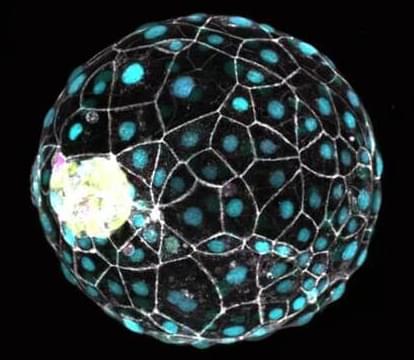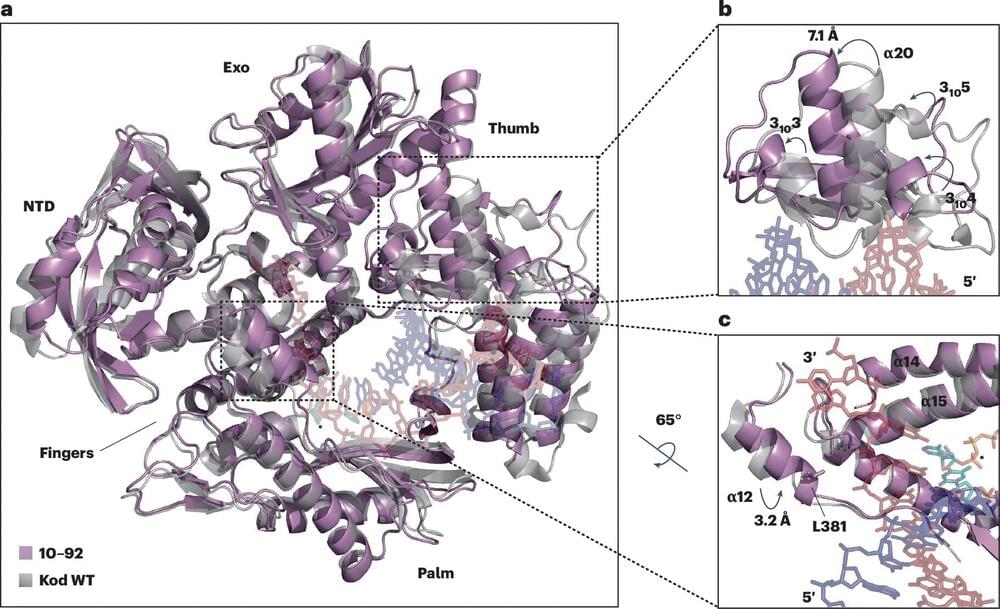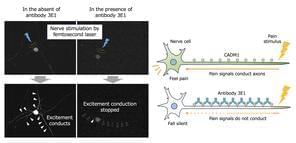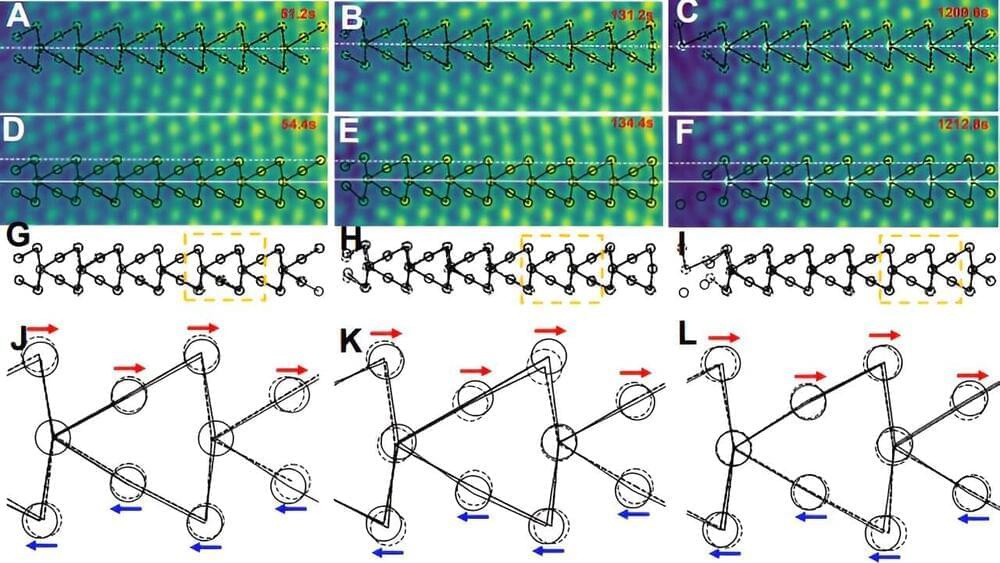New Stanford-led research unveils a hidden factor that could change our understanding of how oceans mitigate climate change. The study, published Oct. 11 in Science, reveals never-before seen mucus “parachutes” produced by microscopic marine organisms that significantly slow their sinking, putting the brakes on a process crucial for removing carbon dioxide from the atmosphere.
Get the latest international news and world events from around the world.


‘Pause Button’ Molecule Uncovered in Human Embryos
Mamma bears press pause on their early pregnancies, so that their cubs are born closer to a food filled spring. Researchers led by a team in Germany have now found this same pregnancy pause button exists in human cells too.
“Although we have lost the ability to naturally enter dormancy, these experiments suggest that we have nevertheless retained this inner ability and could eventually unleash it,” says molecular geneticist Nicolas Rivron from the Austrian Academy of Sciences (IMBA).
“Triggering a dormant state during an IVF procedure could provide a larger time window to assess embryo health and to synchronize it with the mother for better implantation inside the uterus.”

Afforestation and Reforestation: A Path to Achieving the 1.5°C Target?
How can afforestation/reforestation (AR) help reduce climate change and help achieve the goal of the Paris Agreement calling for a maximum 1.5 degrees Celsius above pre-industrial levels? This is what a recent study published in Nature Communications hopes to address as a team of researchers from Germany investigated how AR could contribute to meeting this goal. This study holds the potential to help researchers, climate scientists, legislators, and the public better understand the steps that can be taken to mitigate the effects of climate change, for both the short and long term.
In simple terms, afforestation/reforestation (AR) is planting trees in areas that have experienced deforestation (tree removal) or areas where trees never existed. For the study, the researchers used Integrated Assessment Models (IAMs) to simulate how AR could contribute to the Paris Agreement goals by conducting more than 1,200 scenarios. In the end, the researchers found that AR contributions to climate change makes its biggest impact in 2052, along with decreasing average global temperatures by 0.2 degrees Celsius by the end of the century. Finally, AR could also reduce the amount of time before average global temperatures exceed 1.5 degrees Celsius by 13 years.
“These results show that global AR can in fact make an important contribution to mitigating climate change, when applied at the large sale,” said Dr. Yiannis Moustakis, who is a postdoctoral researcher at Ludwig Maximilians Universität München and lead author of the study. “But it is not a panacea and must be viewed in a more comprehensive framework that takes socioeconomic trade-offs equally into account. Planting a forest could create jobs, revenue, and promote ecosystem services, but it could also deprive people’s livelihood, exacerbate poverty, financially or physically displace people, and disturb local food networks.”


A Camera beyond Imagination 📸
MIT researchers developed an extraordinary camera capable of capturing 1 trillion frames per second, fast enough to record the movement of light.
This means it can film events that happen at speeds too quick for the human eye to perceive, like the way light travels through objects. The camera uses a technique called streak camera imaging, allowing scientists to visualize and study ultrafast phenomena.

[News] Vietnam Plans to Establish Over 20 Semiconductor Plants
According to a recent article published on the Vietnam Government News website, on September 21, Prime Minister Pham Minh signed Decision No. 1018/QD-TTg, issuing Vietnam’s strategy and vision for the development of the semiconductor industry, with short-term goals until 2030 and long-term projections until 2050.
In this strategic plan, Vietnam outlined five specific tasks and measures, including: Developing specialized chips; Promoting the development of the electronics industry; Developing human resources and attracting talent in the semiconductor field; Attracting investment in the semiconductor sector; and Other relevant tasks and measures.
Goals for 2050: 3 Manufacturing Plants, 20 Packaging and Testing Facilities Overall, this strategy aims to develop Vietnam’s semiconductor industry through a three-phase roadmap.

Bioengineered enzyme can produce synthetic genetic material, advancing development of new therapeutic options
A research team led by the University of California, Irvine has engineered an efficient new enzyme that can produce a synthetic genetic material called threose nucleic acid. The ability to synthesize artificial chains of TNA, which is inherently more stable than DNA, advances the discovery of potentially more powerful, precise therapeutic options to treat cancer and autoimmune, metabolic and infectious diseases.

New antibody targeting nerve cells offers long-lasting pain relief
Cell surface proteins play a crucial role in cell communication and in sensing changes in the extracellular environment.
Professor Akihiko Ito and Dr. Fuka Takeuchi from the Department of Pathology at Kindai University Faculty of Medicine, Japan, set out to seek answers to this critical question. They investigated the impact of anti-CADM1 antibodies on neuronal activity, and their findings were made available online on 22 August 2024 and published in the journal Life Sciences on 11 September 2024. the study.
The team injected 3E1, the anti-CADM1 ectodomain antibody, under the mouse skin to study its localization on nerve fibers. Immunohistochemical and immunofluorescence studies revealed that the injected 3E1 was exclusively localized on peripheral nerves in the dermis. The lead author of the study, Prof. Ito highlights, “As CADM1 can recruit neuronal receptors to the plasma membrane, we hypothesized that this accumulation of 3E1 may blunt neuronal sensitivity, i.e., have an analgesic effect, via altering the expression of CADM1 on nerve fibers. However, to our knowledge, there have been no studies that attempted to develop drugs in terms of inhibiting CADM1 in nerves.”
Analgesic effects were tested using a formalin-induced chemical-inflammatory pain test and video-recorded behavior analysis at 6-, 12-, and 24-hours post-injection. Mice injected with 3E1 exhibited less pain-related behaviors when compared with controls, with analgesic effects lasting up to 24 hours, which is significantly longer than the duration of 5 to 8 hours reported for the local anesthetic levobupivacaine.

Researchers discover atomic-level mechanism in polycrystalline materials
Researchers at the University of California, Irvine and other international institutions have for the first time achieved atomic-scale observations of grain rotation in polycrystalline materials. Widely used in electronic devices, aerospace technologies, automotive applications and solar energy systems, these substances have long been studied for their unique properties and structural dynamics.